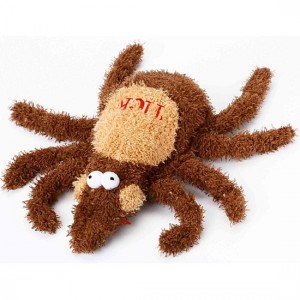We can put dis down in da fings dat makes me skreem n hide category! I hates ticks yuck!!!
Historically considered a southern and south-central parasite, the lone star tick is progressively expanding northward and eastward, creating new concerns for pets and people in these areas of the country. This tick, known for the white, star-like spot on the back of the female, is an aggressive biter and can transmit pathogen diseases to dogs, cats and people.
“Lone star ticks become more and more widespread every year, as they continue to infiltrate states where they have never before been present,” said Michael Dryden, DVM, PhD, distinguished professor of veterinary parasitology at Kansas State University College of Veterinary Medicine, who is considered one of the nation’s foremost authorities on ticks that infect dogs and cats.
New data shows viable lone star tick populations today as far north as New York, Maine – even Ontario, Canada – and as far west as Nebraska. Traditionally found in southeastern and south-central states such as Texas, Oklahoma, Missouri, Arkansas, Georgia, Florida and the Carolinas, the lone star tick now can be found throughout the northeast and north-central region in places like Iowa, Illinois, Indiana, Wisconsin, Michigan and Pennsylvania.
“The lone star tick is a very aggressive tick, and it actively seeks out people and pets to feed on,” said Michael J. Yabsley, MS, PhD, F.R.E.S, associate professor at the Warnell School of Forestry and Natural Resources and the Southeastern Cooperative Wildlife Disease Study, College of Veterinary Medicine at The University of Georgia. “It’s one of the most common ticks that people find on themselves and their dogs, so everyone should take precautions – especially in the new areas of invasion.”
Parasitologists like Dryden and Yabsley say the reason for the lone star tick expansion, which began about 25 years ago, is multi-faceted and complex, citing such factors as milder winters, suburbanization and the proliferation of white-tailed deer and wild turkeys — common hosts for lone star ticks. With deer and turkey populations increasing and spreading and more people moving closer to woodlands and wildlife, conditions are conducive for lone star tick proliferation and interaction with domestic animals and their owners.
Ticks, including the lone star, are most active in the spring. It’s important, however, to remain vigilant year-round about protecting dogs from ticks. They go dormant during the winter but don’t die – even when there’s a hard freeze – and they can come out to feed on mild days.
“By the time you notice ticks on dogs, it’s often too late,” said Dryden. “All it takes is one bite.”
Even if pet owners use tick preventives, infections can still occur if owners’ mistime or forget an application or dose. The two most common pathogens the lone star tick can transmit to both animals and humans are the causative agents of ehrlichiosis and Rocky Mountain spotted fever (RMSF). Ehrlichiosis can cause loss of appetite and joint pain, among other ailments. RMSF symptoms include arthritis-like stiffness and neurological problems. If not treated early, RMSF can result in death.
While it’s difficult to tell if a dog has a tick-borne disease, veterinarians can screen for them. They recommend testing annually for these diseases, which usually can be successfully treated with antibiotics.
People who want to learn more about how to protect their families and pets should consult their veterinarians and www.DogsAndTicks.com, a helpful website with information about tick-bite prevention and tick diseases – including how prevalent some of them are in their own neighborhoods. Since early diagnosis and treatment are keys to longer and higher-quality lives for dogs, the online resource also teaches people how to recognize difficult-to-distinguish signs of infection, how to properly check for ticks and remove embedded ticks.
The veterinarians and veterinary parasitologists who support and develop content for www.DogsAndTicks.com are committed to educating pet owners about the prevalence and risks of tick-borne diseases. The website does not endorse any individual product but serves as an informational source, with tools that include interactive prevalence maps for tick-borne diseases based on diagnostic screenings from across the country.
IDEXX Laboratories, Inc., is a global market leader in pet healthcare innovation, helping practicing veterinarians around the world advance medical care with a broad range of diagnostic products and services. IDEXX created www.DogsAndTicks.com as a resource for pet owners.

